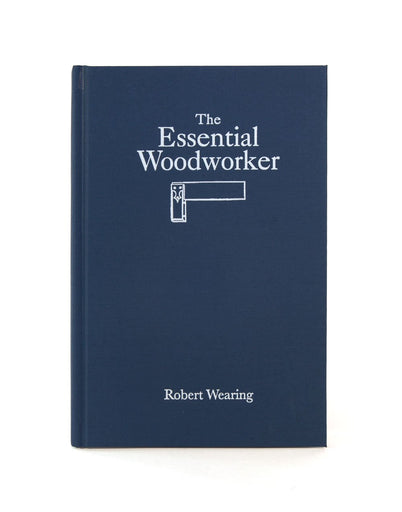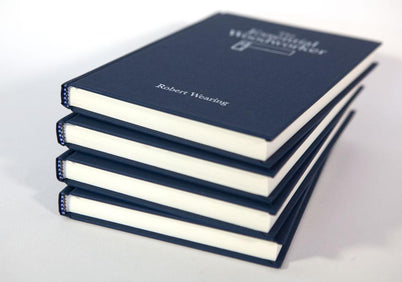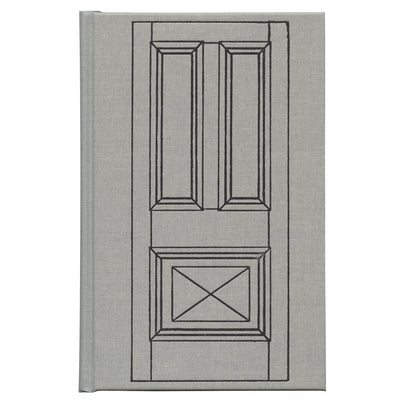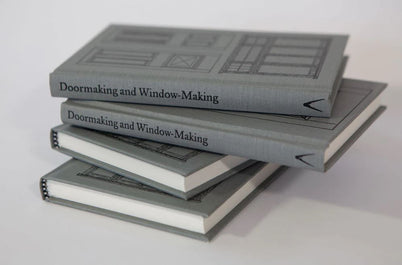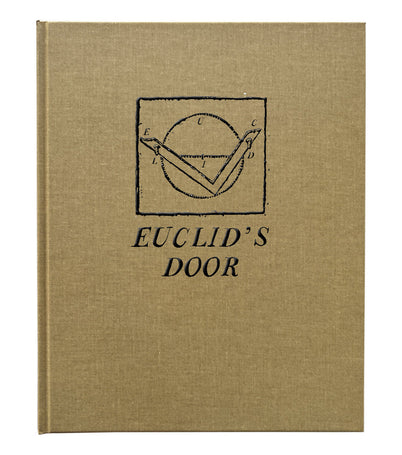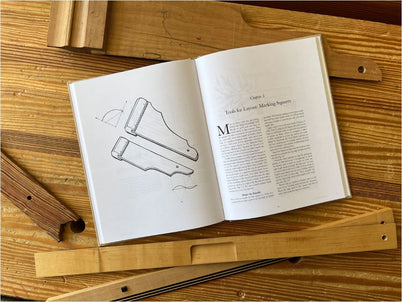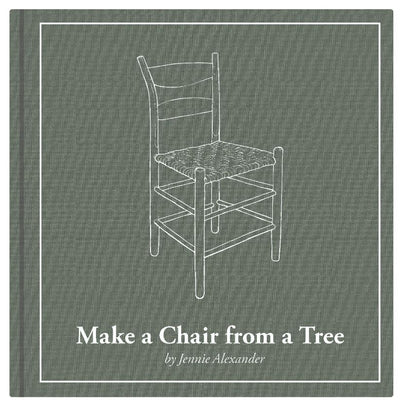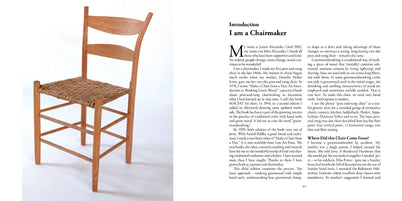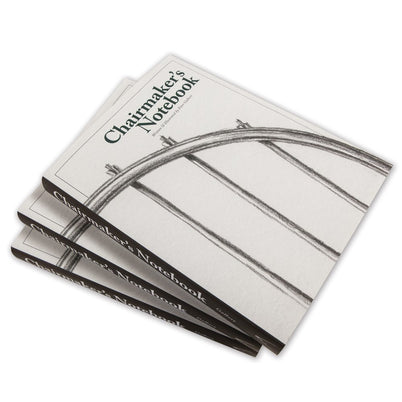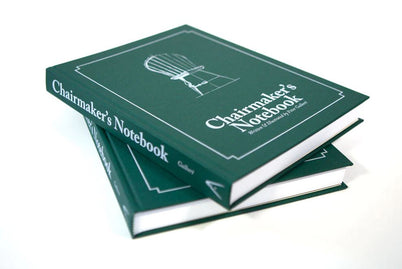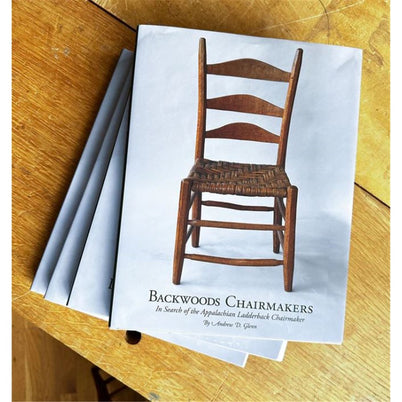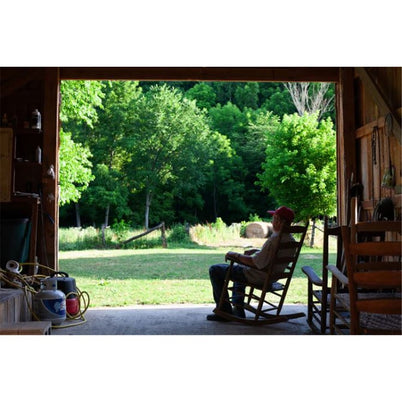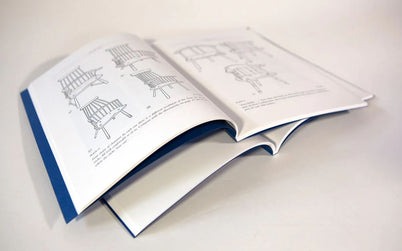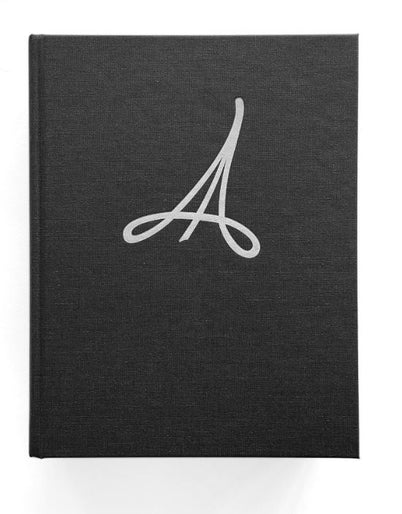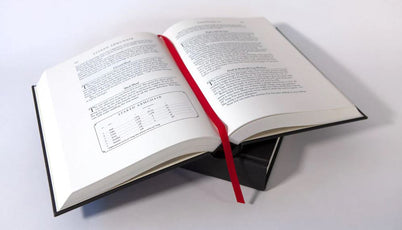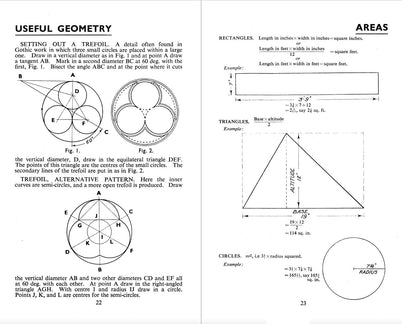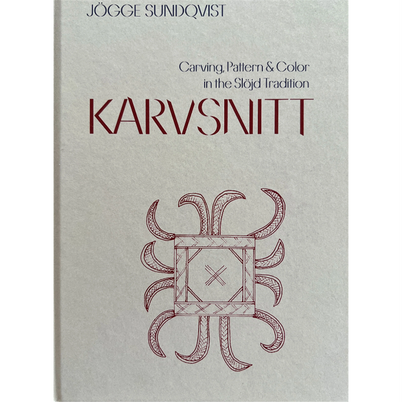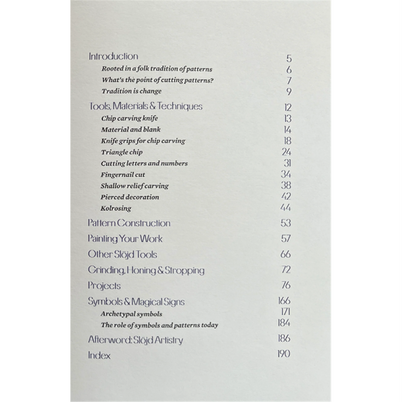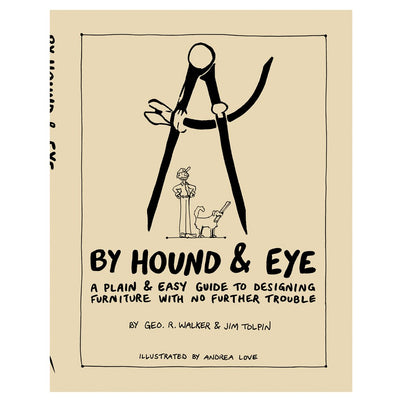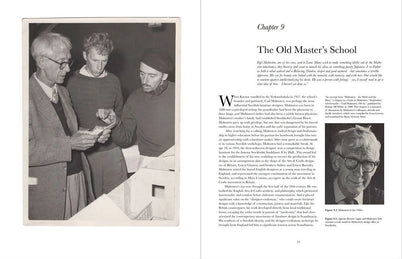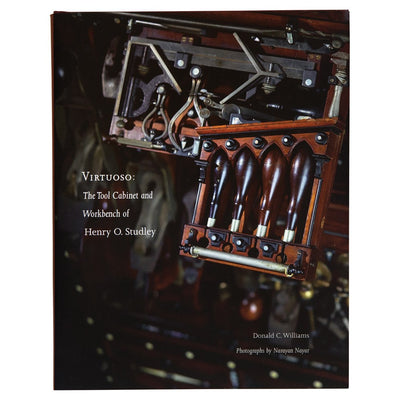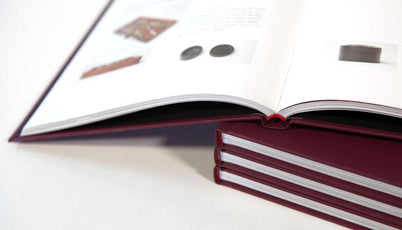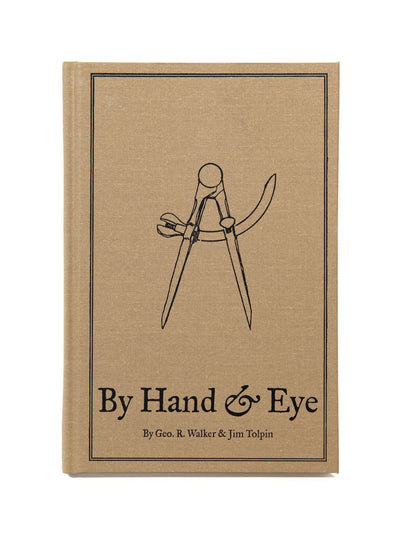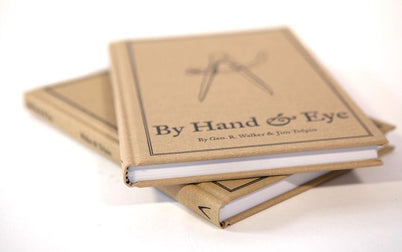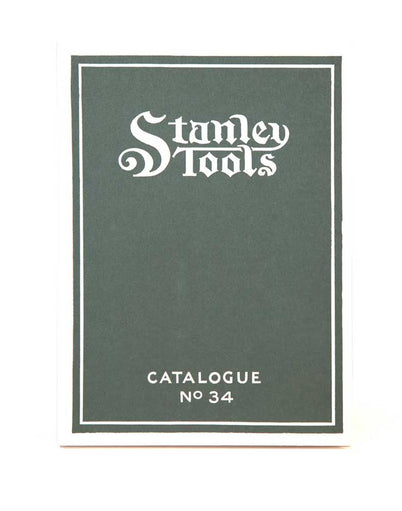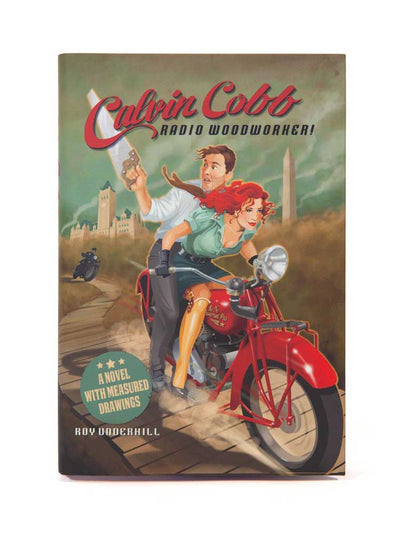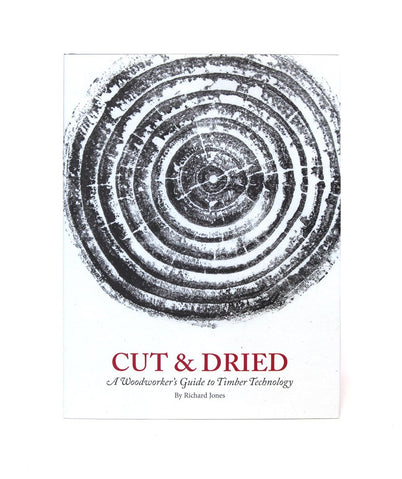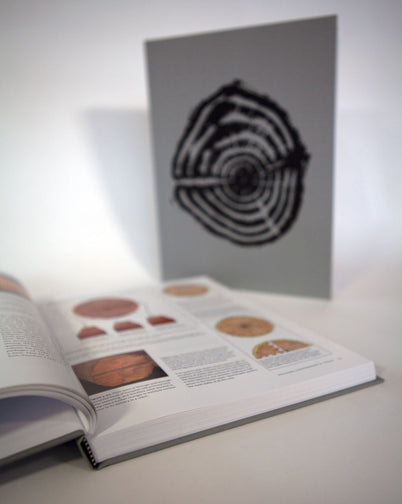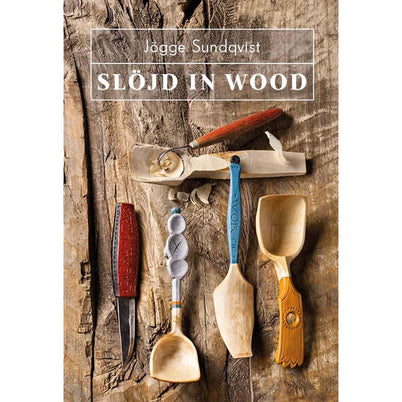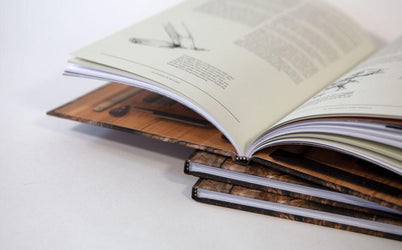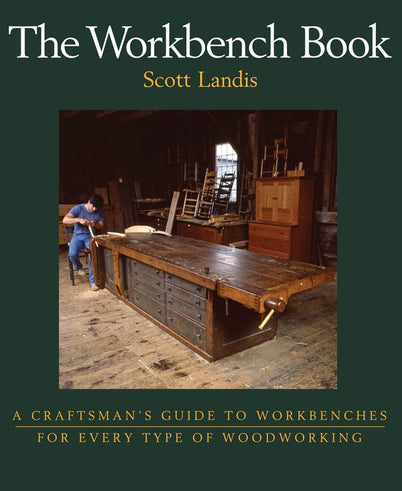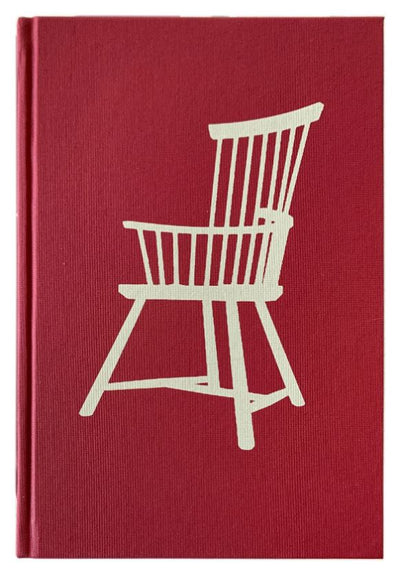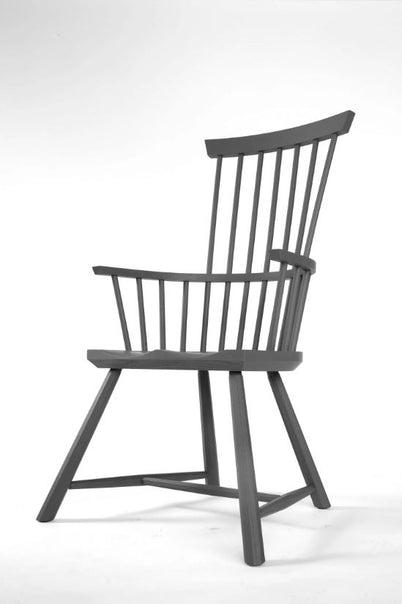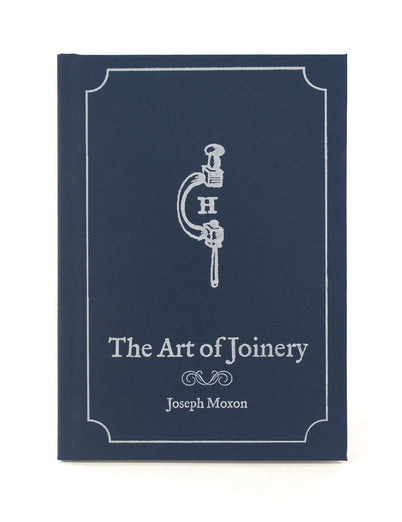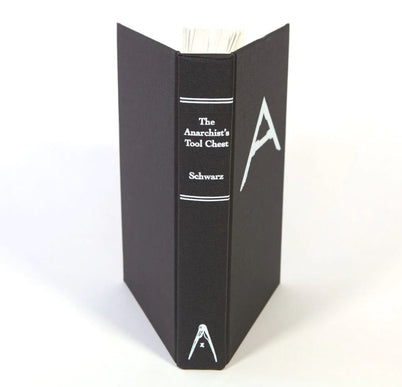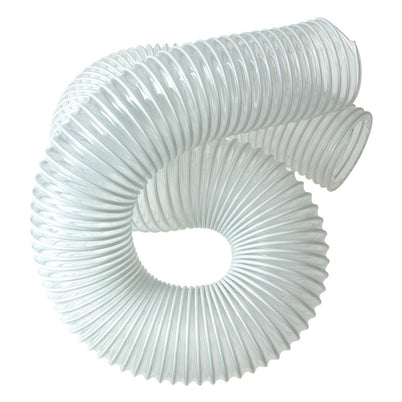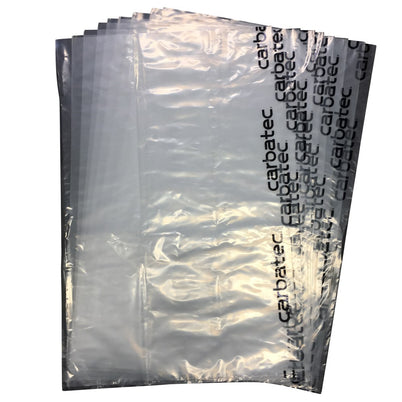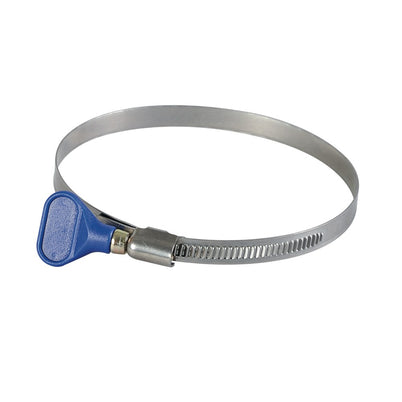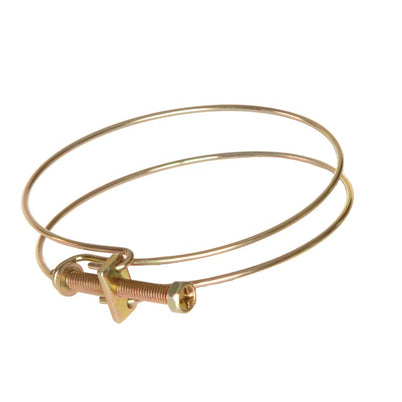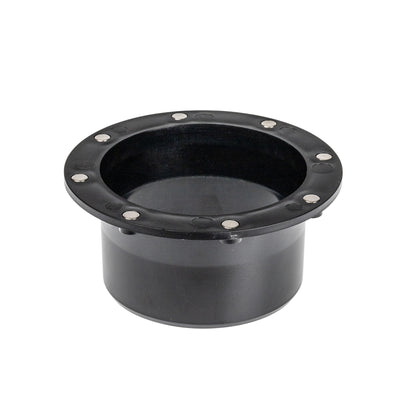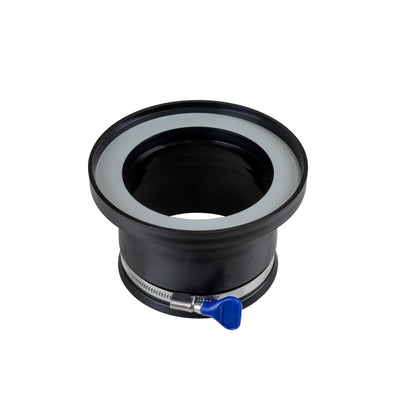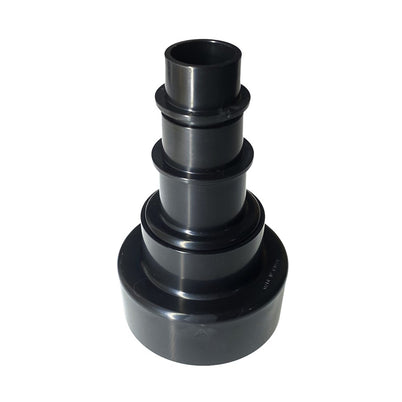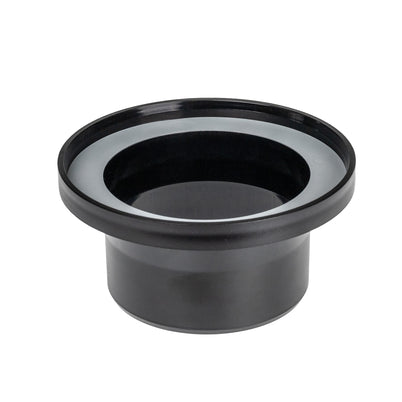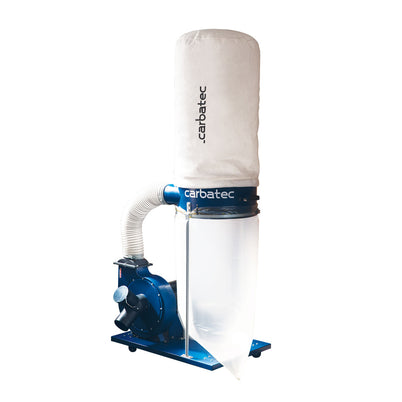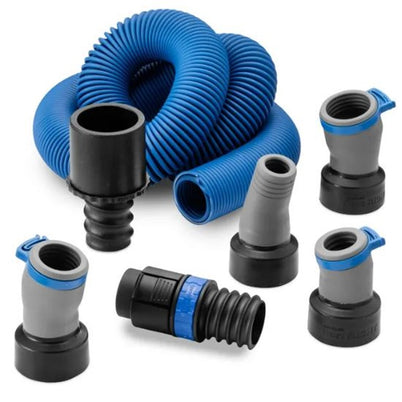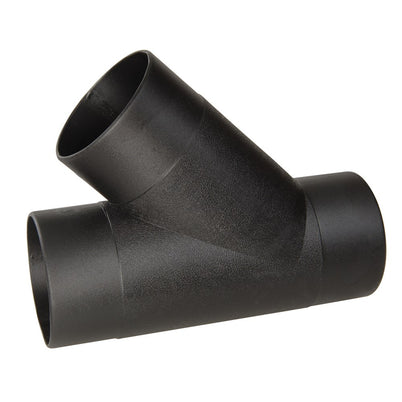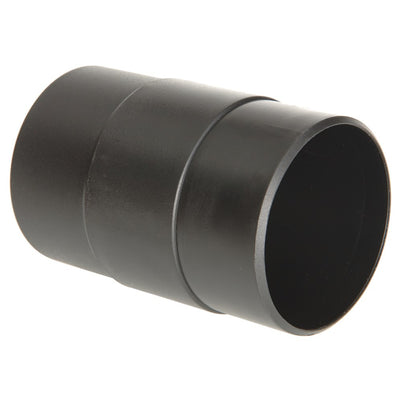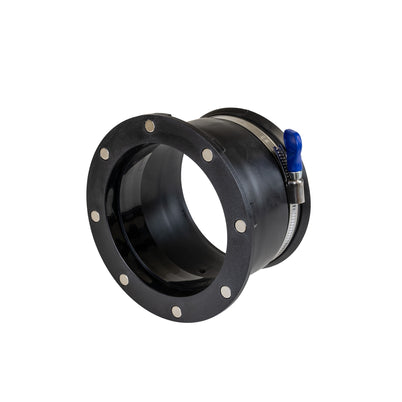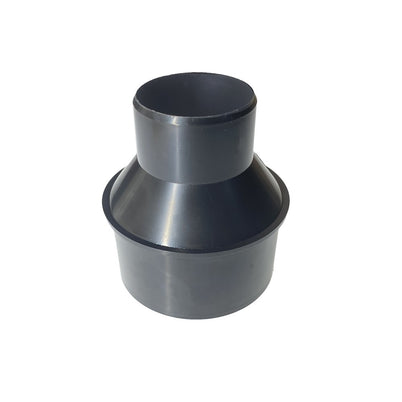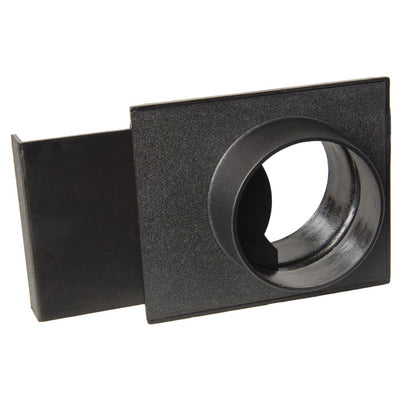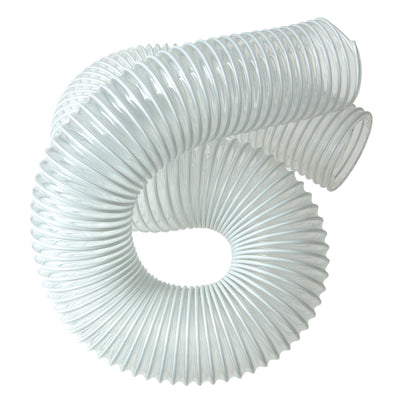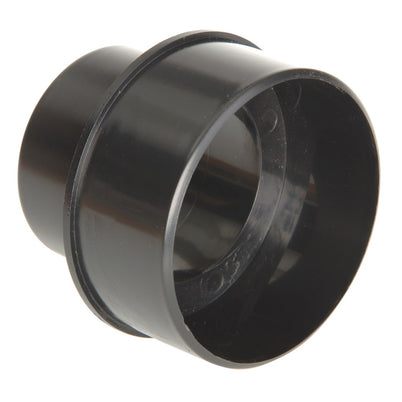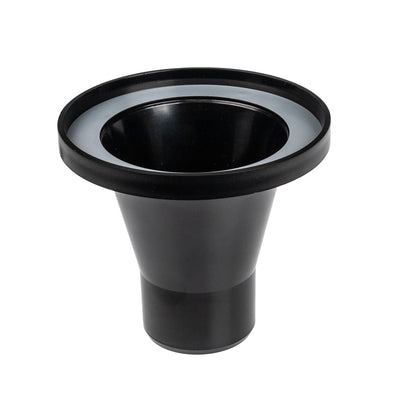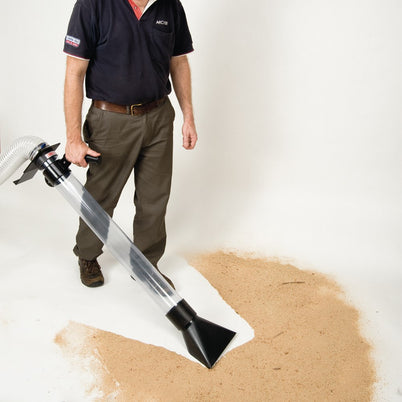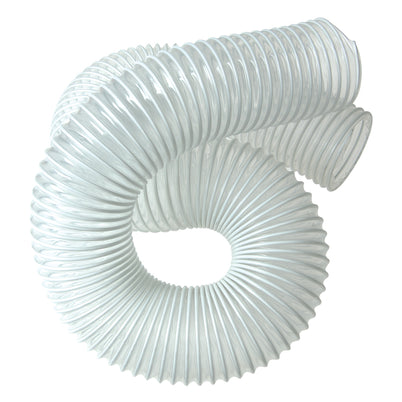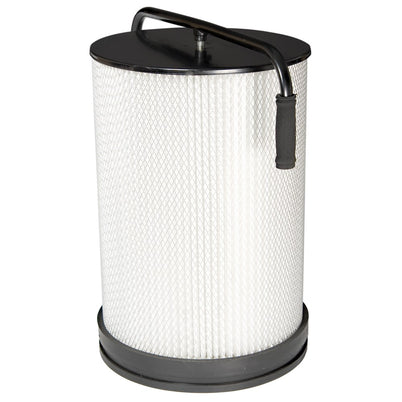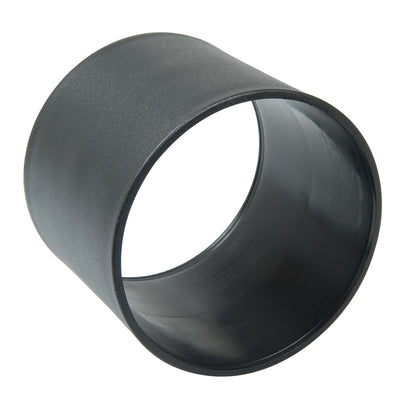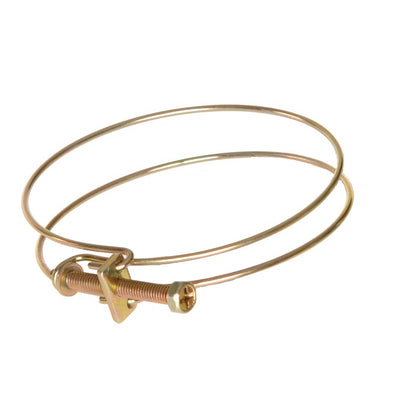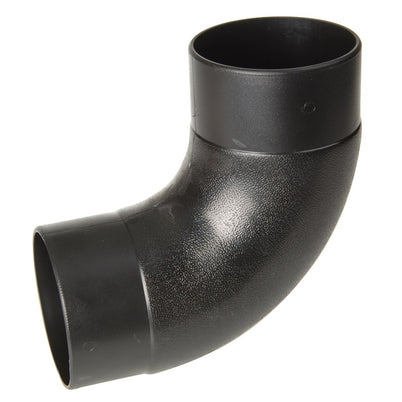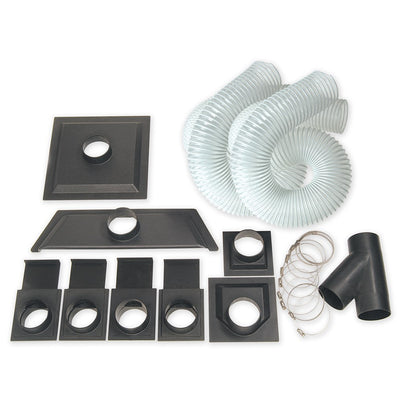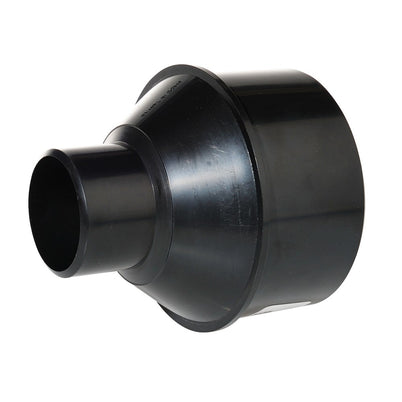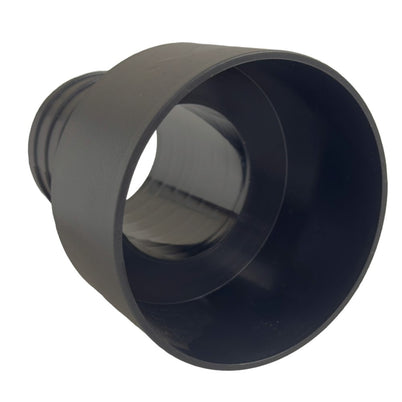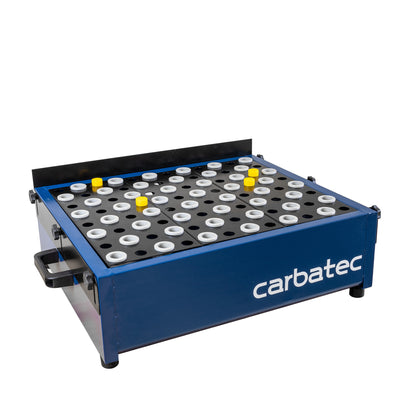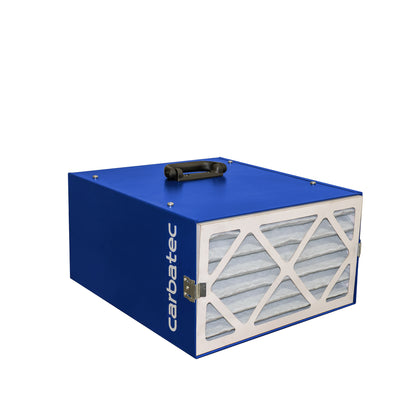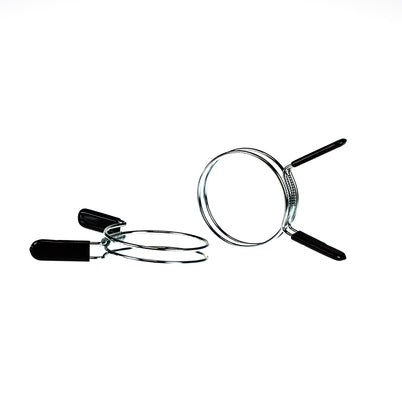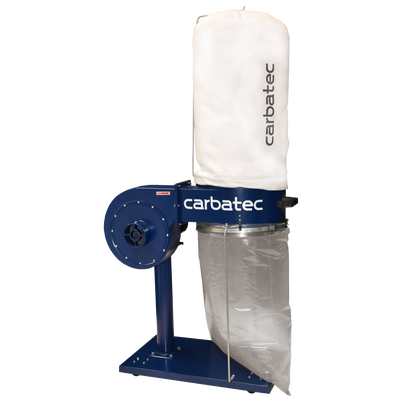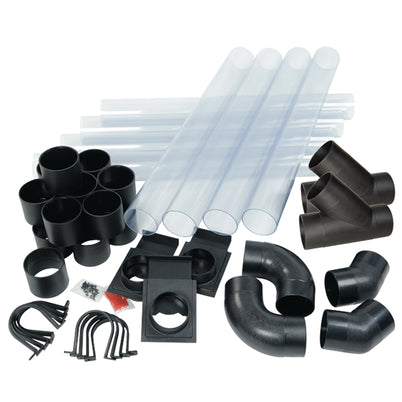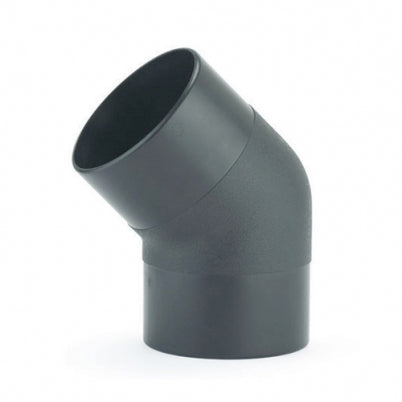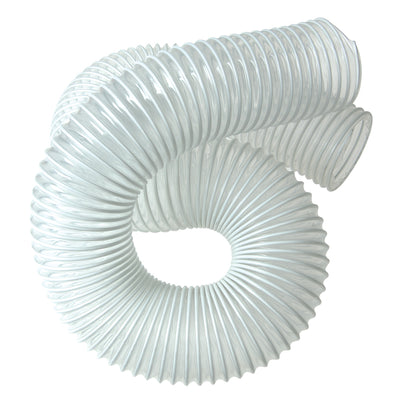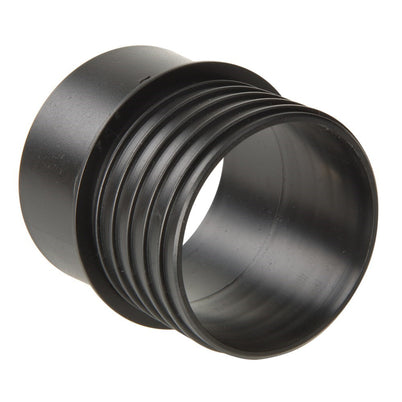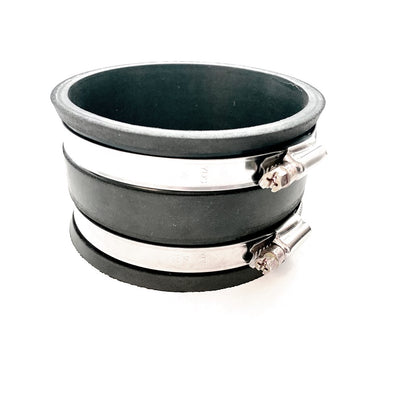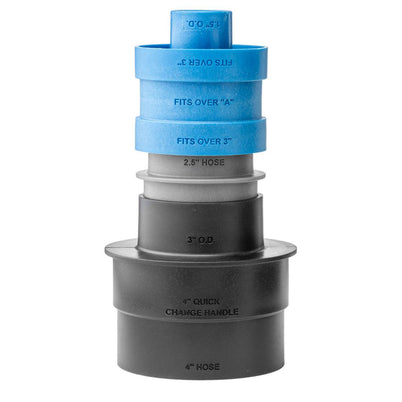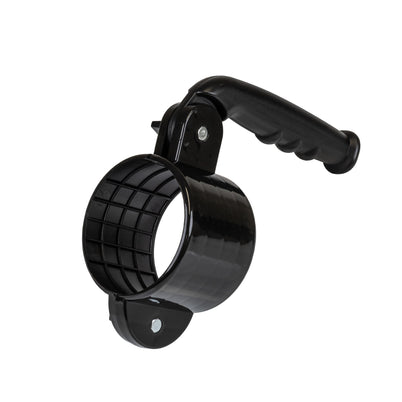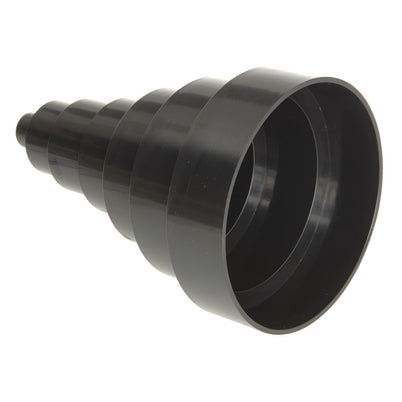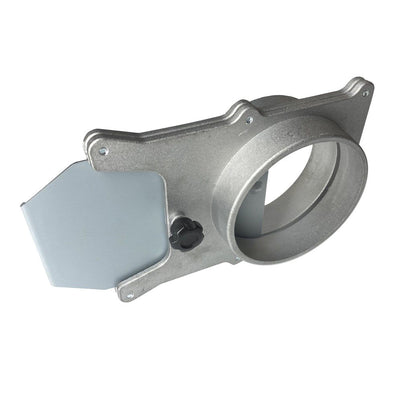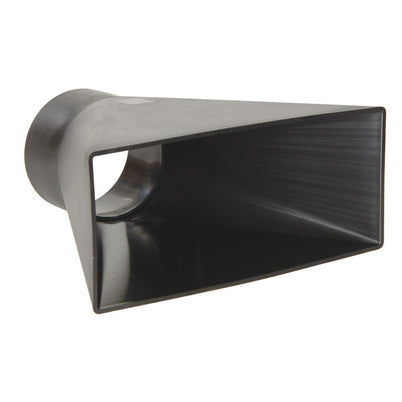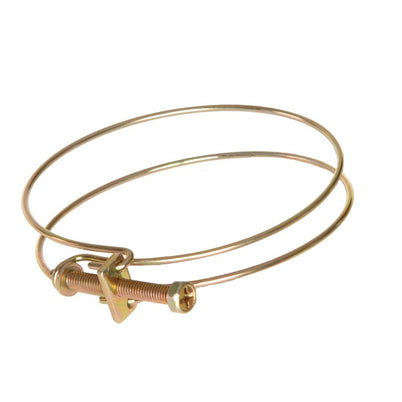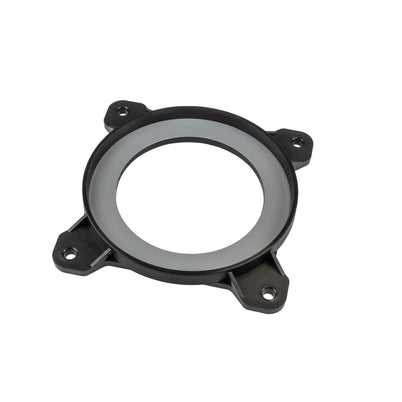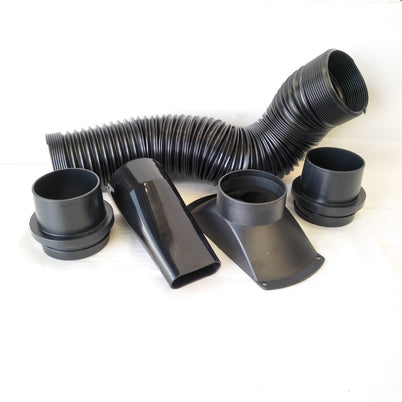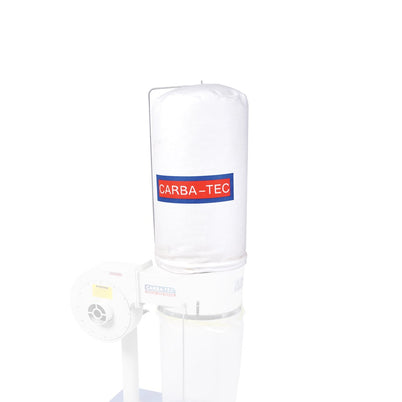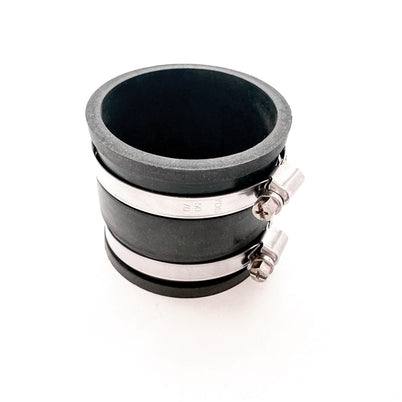Lost Art Press
-
Book - "The Essential Woodworker" By Robert Wearing
SKU: B-0578060446SKU:B-0578060446Product Code:B-0578060446Inc GSTRegular price $52.70Regular priceUnit price / per$62.00Sale price $52.70Inc GSTRegular price $52.70Regular priceUnit price / per$62.00Sale price $52.70Add to Wishlist Added to Wishlist -
Book - "Doormaking and Window Making" Anonymous Author
SKU: B-0985077785SKU:B-0985077785Product Code:B-0985077785Inc GSTRegular price $50.15Regular priceUnit price / per$59.00Sale price $50.15Inc GSTRegular price $50.15Regular priceUnit price / per$59.00Sale price $50.15Add to Wishlist Added to Wishlist -
Book - "Euclid's Door: Building the Tools of ‘By Hand & Eye’" By George R. Walker & Jim Tolpin
SKU: B-9781954697089SKU:B-9781954697089Product Code:B-9781954697089Inc GSTRegular price $54.40Regular priceUnit price / per$64.00Sale price $54.40Inc GSTRegular price $54.40Regular priceUnit price / per$64.00Sale price $54.40Add to Wishlist Added to Wishlist -
Book - Make a Chair from a Tree: Third Edition
SKU: B-1954697027SKU:B-1954697027Product Code:B-1954697027Inc GSTRegular price $58.65Regular priceUnit price / per$69.00Sale price $58.65Inc GSTRegular price $58.65Regular priceUnit price / per$69.00Sale price $58.65Add to Wishlist Added to Wishlist -
Book - "Chairmakers Notebook" Written & illustrated by Peter Galbert
SKU: B-0990623038SKU:B-0990623038Product Code:B-0990623038Inc GSTRegular price $92.65Regular priceUnit price / per$109.00Sale price $92.65Inc GSTRegular price $92.65Regular priceUnit price / per$109.00Sale price $92.65Add to Wishlist Added to Wishlist -
Book - Backwoods Chairmakers: In Search of the Appalachian Ladderback Chairmaker by Andrew D. Glenn
SKU: B-9781954697171SKU:B-9781954697171Product Code:B-9781954697171Inc GSTRegular price $75.65Regular priceUnit price / per$89.00Sale price $75.65Inc GSTRegular price $75.65Regular priceUnit price / per$89.00Sale price $75.65Add to Wishlist Added to Wishlist -
Book - "Sharpen This" By Christopher Schwarz
SKU: B-9781954697119SKU:B-9781954697119Product Code:B-9781954697119Inc GSTRegular price $33.15Regular priceUnit price / per$39.00Sale price $33.15Inc GSTRegular price $33.15Regular priceUnit price / per$39.00Sale price $33.15Add to Wishlist Added to Wishlist -
Book - Welsh Stick Chairs by John Brown
SKU: B-1732210011SKU:B-1732210011Product Code:B-1732210011Inc GSTRegular price $50.15Regular priceUnit price / per$59.00Sale price $50.15Inc GSTRegular price $50.15Regular priceUnit price / per$59.00Sale price $50.15Add to Wishlist Added to Wishlist -
Book - "The Anarchists Design Book" by Christopher Schwarz
SKU: B-0990623076SKU:B-0990623076Product Code:B-0990623076Inc GSTRegular price $88.40Regular priceUnit price / per$104.00Sale price $88.40Inc GSTRegular price $88.40Regular priceUnit price / per$104.00Sale price $88.40Add to Wishlist Added to Wishlist -
Book - The Woodworkers Pocket Book
SKU: B-9781733391696SKU:B-9781733391696Product Code:B-9781733391696Inc GSTRegular price $33.15Regular priceUnit price / per$39.00Sale price $33.15Inc GSTRegular price $33.15Regular priceUnit price / per$39.00Sale price $33.15Add to Wishlist Added to Wishlist -
Karvsnitt by Jogge Sundqvist
SKU: B-9781954697140SKU:B-9781954697140Product Code:B-9781954697140Inc GSTRegular price $62.90Regular priceUnit price / per$74.00Sale price $62.90Inc GSTRegular price $62.90Regular priceUnit price / per$74.00Sale price $62.90Add to Wishlist Added to Wishlist -
Book - Shop Tails: The Animals Who Help Us Make Things Work
SKU: B-1954697041SKU:B-1954697041Product Code:B-1954697041Inc GSTRegular price $19.60Regular priceUnit price / per$49.00Sale price $19.60Inc GSTRegular price $19.60Regular priceUnit price / per$49.00Sale price $19.60Add to Wishlist Added to Wishlist -
Book - "By Hound & Eye" By Geo. R Walker & Jim Tolpin
SKU: B-0990623052SKU:B-0990623052Product Code:B-0990623052Inc GSTRegular price $41.65Regular priceUnit price / per$49.00Sale price $41.65Inc GSTRegular price $41.65Regular priceUnit price / per$49.00Sale price $41.65Add to Wishlist Added to Wishlist -
James Krenov - Leave Fingerprints by Brendan Bernhardt Gaffney
SKU: B-1733391672SKU:B-1733391672Product Code:B-1733391672Inc GSTRegular price $84.15Regular priceUnit price / per$99.00Sale price $84.15Inc GSTRegular price $84.15Regular priceUnit price / per$99.00Sale price $84.15Add to Wishlist Added to Wishlist -
Book - "Virtuoso" The Tool Cabinet and Workbench of Henry O. Studley By Donald C. Williams
SKU: B-0990623045SKU:B-0990623045Product Code:B-0990623045Inc GSTRegular price $84.15Regular priceUnit price / per$99.00Sale price $84.15Inc GSTRegular price $84.15Regular priceUnit price / per$99.00Sale price $84.15Add to Wishlist Added to Wishlist -
Book - "By Hand & Eye" By George R. Walker & Jim Tolpin
SKU: B-0985077754SKU:B-0985077754Product Code:B-0985077754Inc GSTRegular price $84.15Regular priceUnit price / per$99.00Sale price $84.15Inc GSTRegular price $84.15Regular priceUnit price / per$99.00Sale price $84.15Add to Wishlist Added to Wishlist -
Cricket Tables by Derek Jones
SKU: B-9781954697164SKU:B-9781954697164Product Code:B-9781954697164Inc GSTRegular price $52.70Regular priceUnit price / per$62.00Sale price $52.70Inc GSTRegular price $52.70Regular priceUnit price / per$62.00Sale price $52.70Add to Wishlist Added to Wishlist -
Book - Stanley Catalogue No. 34
SKU: B-0997870206SKU:B-0997870206Product Code:B-0997870206Inc GSTRegular price $50.15Regular priceUnit price / per$59.00Sale price $50.15Inc GSTRegular price $50.15Regular priceUnit price / per$59.00Sale price $50.15Add to Wishlist Added to Wishlist -
Book - "Calvin Cobb - Radio Woodworker!" By Roy Underhill
SKU: B-0990623021SKU:B-0990623021Product Code:B-0990623021Inc GSTRegular price $40.50Regular priceUnit price / per$45.00Sale price $40.50Inc GSTRegular price $40.50Regular priceUnit price / per$45.00Sale price $40.50Add to Wishlist Added to Wishlist -
Book - "Campaign Furniture" By Christopher Schwarz
SKU: B-0985077792SKU:B-0985077792Product Code:B-0985077792Inc GSTRegular price $75.65Regular priceUnit price / per$89.00Sale price $75.65Inc GSTRegular price $75.65Regular priceUnit price / per$89.00Sale price $75.65Add to Wishlist Added to Wishlist -
The Belligerent Finisher by John Porritt
SKU: B-9781954697096SKU:B-9781954697096Product Code:B-9781954697096Inc GSTRegular price $37.40Regular priceUnit price / per$44.00Sale price $37.40Inc GSTRegular price $37.40Regular priceUnit price / per$44.00Sale price $37.40Add to Wishlist Added to Wishlist -
Book - Cut & Dried: A Woodworker’s Guide to Timber Technology by Richard Jones
SKU: B-0997870299SKU:B-0997870299Product Code:B-0997870299Inc GSTRegular price $118.15Regular priceUnit price / per$139.00Sale price $118.15Inc GSTRegular price $118.15Regular priceUnit price / per$139.00Sale price $118.15Add to Wishlist Added to Wishlist -
Book - Slojd In Wood by Jogge Sundgvist
SKU: B-0997870282SKU:B-0997870282Product Code:B-0997870282Inc GSTRegular price $72.25Regular priceUnit price / per$85.00Sale price $72.25Inc GSTRegular price $72.25Regular priceUnit price / per$85.00Sale price $72.25Add to Wishlist Added to Wishlist -
Book - The Workbench Book
SKU: B-9781733391689SKU:B-9781733391689Product Code:B-9781733391689Inc GSTRegular price $75.65Regular priceUnit price / per$89.00Sale price $75.65Inc GSTRegular price $75.65Regular priceUnit price / per$89.00Sale price $75.65Add to Wishlist Added to Wishlist -
Book - The Stick Chair Book
SKU: B-1954697034SKU:B-1954697034Product Code:B-1954697034Inc GSTRegular price $80.75Regular priceUnit price / per$95.00Sale price $80.75Inc GSTRegular price $80.75Regular priceUnit price / per$95.00Sale price $80.75Add to Wishlist Added to Wishlist -
Book - The Art of Joinery - Revised Edition
SKU: B-0985077778SKU:B-0985077778Product Code:B-0985077778Inc GSTRegular price $40.80Regular priceUnit price / per$48.00Sale price $40.80Inc GSTRegular price $40.80Regular priceUnit price / per$48.00Sale price $40.80Add to Wishlist Added to Wishlist -
Book - "The Anarchists Tool Chest" By Christopher Schwarz
SKU: B-0578084138SKU:B-0578084138Product Code:B-0578084138Inc GSTRegular price $88.40Regular priceUnit price / per$104.00Sale price $88.40Inc GSTRegular price $88.40Regular priceUnit price / per$104.00Sale price $88.40Add to Wishlist Added to Wishlist
Recommended products
Carbatec 3 metres of 4" Clear Hi-Flex PVC Hose
SKU:
HOSE43B
SKU:
HOSE43B
Product Code:
HOSE43B
Regular price
$39.60
Regular price
$49.50
Sale price
$39.60
Unit price
/
per
Regular price
$39.60
Regular price
$49.50
Sale price
$39.60
Unit price
/
per
Add to Wishlist
Added to Wishlist
Carbatec Plastic Collection Bags - Pk of 10 - Suits drum diameters up to 510mm - 1250mm Long
SKU:
PCB-800XL
SKU:
PCB-800XL
Product Code:
PCB-800XL
Regular price
$35.96
Regular price
$39.95
Sale price
$35.96
Unit price
/
per
Regular price
$35.96
Regular price
$39.95
Sale price
$35.96
Unit price
/
per
Add to Wishlist
Added to Wishlist
Carbatec Hose Clamp - 4" Thumb Screw Adjust
SKU:
YW-110T
SKU:
YW-110T
Product Code:
YW-110T
Regular price
$4.76
Regular price
$5.95
Sale price
$4.76
Unit price
/
per
Regular price
$4.76
Regular price
$5.95
Sale price
$4.76
Unit price
/
per
Add to Wishlist
Added to Wishlist
Carbatec Hose Clamp - 4"
SKU:
M-054
SKU:
M-054
Product Code:
M-054
Regular price
$3.60
Regular price
$4.50
Sale price
$3.60
Unit price
/
per
Regular price
$3.60
Regular price
$4.50
Sale price
$3.60
Unit price
/
per
Add to Wishlist
Added to Wishlist
Carbatec Magnetic Quick Connect Dust Hose Fitting - Magnet Side suits 4inch Hose
SKU:
CT-MDC-100M
SKU:
CT-MDC-100M
Product Code:
CT-MDC-100M
Regular price
$17.50
Regular price
$25.00
Sale price
$17.50
Unit price
/
per
Regular price
$17.50
Regular price
$25.00
Sale price
$17.50
Unit price
/
per
Add to Wishlist
Added to Wishlist
Carbatec Rubber Fitting Magnetic Dust Connector 100mm Steel Side
SKU:
CT-MDC-4S
SKU:
CT-MDC-4S
Product Code:
CT-MDC-4S
Regular price
$16.80
Regular price
$24.00
Sale price
$16.80
Unit price
/
per
Regular price
$16.80
Regular price
$24.00
Sale price
$16.80
Unit price
/
per
Add to Wishlist
Added to Wishlist
Carbatec Multi-Step Dust Reducer
SKU:
YW-1137
SKU:
YW-1137
Product Code:
YW-1137
Regular price
$7.16
Regular price
$8.95
Sale price
$7.16
Unit price
/
per
Regular price
$7.16
Regular price
$8.95
Sale price
$7.16
Unit price
/
per
Add to Wishlist
Added to Wishlist
Carbatec Magnetic Quick Connect Dust Hose Fitting - Steel Side suits 4inch Hose
SKU:
CT-MDC-100S
SKU:
CT-MDC-100S
Product Code:
CT-MDC-100S
Regular price
$8.40
Regular price
$12.00
Sale price
$8.40
Unit price
/
per
Regular price
$8.40
Regular price
$12.00
Sale price
$8.40
Unit price
/
per
Add to Wishlist
Added to Wishlist
Carbatec Portable Dust Collector - 2HP
SKU:
DC-1200P
SKU:
DC-1200P
Product Code:
DC-1200P
Regular price
$399.00
Regular price
$484.00
Sale price
$399.00
Unit price
/
per
Regular price
$399.00
Regular price
$484.00
Sale price
$399.00
Unit price
/
per
Add to Wishlist
Added to Wishlist
Rockler Dust Right FlexiPort Power Tool Hose Kit with Click-Connect, 3' to 12' Expandable Hose
SKU:
RK-68966
SKU:
RK-68966
Product Code:
RK-68966
Regular price
$73.60
Regular price
$92.00
Sale price
$73.60
Unit price
/
per
Regular price
$73.60
Regular price
$92.00
Sale price
$73.60
Unit price
/
per
Add to Wishlist
Added to Wishlist
Carbatec Dust Y-Junction - 4" - Plastic
SKU:
M-002
SKU:
M-002
Product Code:
M-002
Regular price
$11.92
Regular price
$14.90
Sale price
$11.92
Unit price
/
per
Regular price
$11.92
Regular price
$14.90
Sale price
$11.92
Unit price
/
per
Add to Wishlist
Added to Wishlist
Carbatec Plastic Collection Bags (pk10) to suit DC-500H and FM-230
SKU:
FM-230-PCB
SKU:
FM-230-PCB
Product Code:
FM-230-PCB
Regular price
$20.66
Regular price
$22.95
Sale price
$20.66
Unit price
/
per
Regular price
$20.66
Regular price
$22.95
Sale price
$20.66
Unit price
/
per
Add to Wishlist
Added to Wishlist
Carbatec Dust Hose Connector - 4"
SKU:
M-018
SKU:
M-018
Product Code:
M-018
Regular price
$8.76
Regular price
$10.95
Sale price
$8.76
Unit price
/
per
Regular price
$8.76
Regular price
$10.95
Sale price
$8.76
Unit price
/
per
Add to Wishlist
Added to Wishlist
Carbatec Rubber Fitting Magnetic Dust Connector 100mm Magnet Side
SKU:
CT-MDC-4M
SKU:
CT-MDC-4M
Product Code:
CT-MDC-4M
Regular price
$26.60
Regular price
$38.00
Sale price
$26.60
Unit price
/
per
Regular price
$26.60
Regular price
$38.00
Sale price
$26.60
Unit price
/
per
Add to Wishlist
Added to Wishlist
Carbatec Tapered Reducer - 4" - 2-1/2"
SKU:
YW-1093
SKU:
YW-1093
Product Code:
YW-1093
Regular price
$6.00
Regular price
$7.50
Sale price
$6.00
Unit price
/
per
Regular price
$6.00
Regular price
$7.50
Sale price
$6.00
Unit price
/
per
Add to Wishlist
Added to Wishlist
Carbatec Dust Blast Gate - 4" - Plastic
SKU:
M-006
SKU:
M-006
Product Code:
M-006
Regular price
$8.76
Regular price
$10.95
Sale price
$8.76
Unit price
/
per
Regular price
$8.76
Regular price
$10.95
Sale price
$8.76
Unit price
/
per
Add to Wishlist
Added to Wishlist
Carbatec 3 metres of 2-1/2" Clear Hi-Flex PVC Hose
SKU:
HOSE2123B
SKU:
HOSE2123B
Product Code:
HOSE2123B
Regular price
$39.96
Regular price
$49.95
Sale price
$39.96
Unit price
/
per
Regular price
$39.96
Regular price
$49.95
Sale price
$39.96
Unit price
/
per
Add to Wishlist
Added to Wishlist
Carbatec Dust Reducer - 5" to 4" - Plastic
SKU:
M-035
SKU:
M-035
Product Code:
M-035
Regular price
$7.96
Regular price
$9.95
Sale price
$7.96
Unit price
/
per
Regular price
$7.96
Regular price
$9.95
Sale price
$7.96
Unit price
/
per
Add to Wishlist
Added to Wishlist
Carbatec Magnetic Quick Connect Dust Hose Fitting - Steel Side suits 2.5inch Hose
SKU:
CT-MDC-063S
SKU:
CT-MDC-063S
Product Code:
CT-MDC-063S
Regular price
$8.40
Regular price
$12.00
Sale price
$8.40
Unit price
/
per
Regular price
$8.40
Regular price
$12.00
Sale price
$8.40
Unit price
/
per
Add to Wishlist
Added to Wishlist
Carbatec 4" Dust Collection Wand Kit
SKU:
YW-1106
SKU:
YW-1106
Product Code:
YW-1106
Regular price
$76.00
Regular price
$95.00
Sale price
$76.00
Unit price
/
per
Regular price
$76.00
Regular price
$95.00
Sale price
$76.00
Unit price
/
per
Add to Wishlist
Added to Wishlist
Carbatec 3 metres of 2" Clear Hi-Flex PVC Hose
SKU:
HOSE23B
SKU:
HOSE23B
Product Code:
HOSE23B
Regular price
$36.76
Regular price
$45.95
Sale price
$36.76
Unit price
/
per
Regular price
$36.76
Regular price
$45.95
Sale price
$36.76
Unit price
/
per
Add to Wishlist
Added to Wishlist
Carbatec Pleated Filter Cartridge to suit DC-1200P and FM-300
SKU:
FM-300CF
SKU:
FM-300CF
Product Code:
FM-300CF
Regular price
$251.10
Regular price
$279.00
Sale price
$251.10
Unit price
/
per
Regular price
$251.10
Regular price
$279.00
Sale price
$251.10
Unit price
/
per
Add to Wishlist
Added to Wishlist
Carbatec Dust Fitting Connector - 4"
SKU:
YW-1070
SKU:
YW-1070
Product Code:
YW-1070
Regular price
$6.77
Regular price
$8.45
Sale price
$6.77
Unit price
/
per
Regular price
$6.77
Regular price
$8.45
Sale price
$6.77
Unit price
/
per
Add to Wishlist
Added to Wishlist
Carbatec Hose Clamp - 2.5"
SKU:
M-052.5
SKU:
M-052.5
Product Code:
M-052.5
Regular price
$3.12
Regular price
$3.90
Sale price
$3.12
Unit price
/
per
Regular price
$3.12
Regular price
$3.90
Sale price
$3.12
Unit price
/
per
Add to Wishlist
Added to Wishlist
Carbatec Dust Elbow - 4" - Plastic
SKU:
M-004
SKU:
M-004
Product Code:
M-004
Regular price
$10.32
Regular price
$12.90
Sale price
$10.32
Unit price
/
per
Regular price
$10.32
Regular price
$12.90
Sale price
$10.32
Unit price
/
per
Add to Wishlist
Added to Wishlist
Carbatec 4" Dust Collection Accessory Kit
SKU:
DCK-4
SKU:
DCK-4
Product Code:
DCK-4
Regular price
$119.92
Regular price
$149.90
Sale price
$119.92
Unit price
/
per
Regular price
$119.92
Regular price
$149.90
Sale price
$119.92
Unit price
/
per
Add to Wishlist
Added to Wishlist
Carbatec Tapered Reducer - 4" to 2"
SKU:
YW-1095
SKU:
YW-1095
Product Code:
YW-1095
Regular price
$6.36
Regular price
$7.95
Sale price
$6.36
Unit price
/
per
Regular price
$6.36
Regular price
$7.95
Sale price
$6.36
Unit price
/
per
Add to Wishlist
Added to Wishlist
Carbatec Threaded and Tapered Reducer 4" to 2.5"
SKU:
YW-1042
SKU:
YW-1042
Product Code:
YW-1042
Regular price
$10.36
Regular price
$12.95
Sale price
$10.36
Unit price
/
per
Regular price
$10.36
Regular price
$12.95
Sale price
$10.36
Unit price
/
per
Add to Wishlist
Added to Wishlist
Carbatec Portable Benchtop Down Draft Table
SKU:
CT-DDT-B
SKU:
CT-DDT-B
Product Code:
CT-DDT-B
Regular price
$169.00
Regular price
$0.00
Sale price
$169.00
Unit price
/
per
Regular price
$169.00
Regular price
$0.00
Sale price
$169.00
Unit price
/
per
Add to Wishlist
Added to Wishlist
Carbatec Benchtop Air Filter
SKU:
AF-450H
SKU:
AF-450H
Product Code:
AF-450H
Regular price
$265.50
Regular price
$295.00
Sale price
$265.50
Unit price
/
per
Regular price
$265.50
Regular price
$295.00
Sale price
$265.50
Unit price
/
per
Add to Wishlist
Added to Wishlist
Carbatec Spring Loaded Hose Clamp - suit 4" hose (Pk2)
SKU:
CT-SLHC-4
SKU:
CT-SLHC-4
Product Code:
CT-SLHC-4
Regular price
$15.92
Regular price
$19.90
Sale price
$15.92
Unit price
/
per
Regular price
$15.92
Regular price
$19.90
Sale price
$15.92
Unit price
/
per
Add to Wishlist
Added to Wishlist
Carbatec Portable Dust Collector - 1 HP
SKU:
DC-500H
SKU:
DC-500H
Product Code:
DC-500H
Regular price
$254.00
Regular price
$291.50
Sale price
$254.00
Unit price
/
per
Regular price
$254.00
Regular price
$291.50
Sale price
$254.00
Unit price
/
per
Add to Wishlist
Added to Wishlist
Carbatec Big Gulp Dust Chute
SKU:
DBGULP
SKU:
DBGULP
Product Code:
DBGULP
Regular price
$23.96
Regular price
$29.95
Sale price
$23.96
Unit price
/
per
Regular price
$23.96
Regular price
$29.95
Sale price
$23.96
Unit price
/
per
Add to Wishlist
Added to Wishlist
Carbatec Clear Dust Extraction Ducting Kit with "Y" Fittings
SKU:
YW-2000B
SKU:
YW-2000B
Product Code:
YW-2000B
Regular price
$263.20
Regular price
$329.00
Sale price
$263.20
Unit price
/
per
Regular price
$263.20
Regular price
$329.00
Sale price
$263.20
Unit price
/
per
Add to Wishlist
Added to Wishlist
Carbatec 45 Degree Elbow 100mm (4 Inch)
SKU:
YW-1101
SKU:
YW-1101
Product Code:
YW-1101
Regular price
$11.96
Regular price
$14.95
Sale price
$11.96
Unit price
/
per
Regular price
$11.96
Regular price
$14.95
Sale price
$11.96
Unit price
/
per
Add to Wishlist
Added to Wishlist
Carbatec Blast Gate - Attaches to Machine Dust Port
SKU:
YW-1057
SKU:
YW-1057
Product Code:
YW-1057
Regular price
$11.92
Regular price
$14.90
Sale price
$11.92
Unit price
/
per
Regular price
$11.92
Regular price
$14.90
Sale price
$11.92
Unit price
/
per
Add to Wishlist
Added to Wishlist
Carbatec 3 metres of 3" Clear Hi-Flex PVC Hose
SKU:
HOSE33B
SKU:
HOSE33B
Product Code:
HOSE33B
Regular price
$39.96
Regular price
$49.95
Sale price
$39.96
Unit price
/
per
Regular price
$39.96
Regular price
$49.95
Sale price
$39.96
Unit price
/
per
Add to Wishlist
Added to Wishlist
Carbatec Threaded Connector - 4" to 4"
SKU:
YW-1127
SKU:
YW-1127
Product Code:
YW-1127
Regular price
$10.32
Regular price
$12.90
Sale price
$10.32
Unit price
/
per
Regular price
$10.32
Regular price
$12.90
Sale price
$10.32
Unit price
/
per
Add to Wishlist
Added to Wishlist
Carbatec 4" to 4" Rubber collar
SKU:
YW-1126
SKU:
YW-1126
Product Code:
YW-1126
Regular price
$15.84
Regular price
$19.80
Sale price
$15.84
Unit price
/
per
Regular price
$15.84
Regular price
$19.80
Sale price
$15.84
Unit price
/
per
Add to Wishlist
Added to Wishlist
Rockler Dust Right Stacking Dust Port Adapter Set
SKU:
RK-61247
SKU:
RK-61247
Product Code:
RK-61247
Regular price
$32.00
Regular price
$40.00
Sale price
$32.00
Unit price
/
per
Regular price
$32.00
Regular price
$40.00
Sale price
$32.00
Unit price
/
per
Add to Wishlist
Added to Wishlist
Carbatec Vacuum Handle to suit 4" Tube
SKU:
CT-VAC-11061
SKU:
CT-VAC-11061
Product Code:
CT-VAC-11061
Regular price
$7.21
Regular price
$9.00
Sale price
$7.21
Unit price
/
per
Regular price
$7.21
Regular price
$9.00
Sale price
$7.21
Unit price
/
per
Add to Wishlist
Added to Wishlist
Carbatec Large Universal Stepped Reducer
SKU:
YW-1039
SKU:
YW-1039
Product Code:
YW-1039
Regular price
$14.36
Regular price
$17.95
Sale price
$14.36
Unit price
/
per
Regular price
$14.36
Regular price
$17.95
Sale price
$14.36
Unit price
/
per
Add to Wishlist
Added to Wishlist
Carbatec 4" Blast Gate - Alloy
SKU:
YW-1021
SKU:
YW-1021
Product Code:
YW-1021
Regular price
$16.76
Regular price
$20.95
Sale price
$16.76
Unit price
/
per
Regular price
$16.76
Regular price
$20.95
Sale price
$16.76
Unit price
/
per
Add to Wishlist
Added to Wishlist
Carbatec Plastic Dust Chute - 10" x 4"
SKU:
M-134
SKU:
M-134
Product Code:
M-134
Regular price
$15.92
Regular price
$19.90
Sale price
$15.92
Unit price
/
per
Regular price
$15.92
Regular price
$19.90
Sale price
$15.92
Unit price
/
per
Add to Wishlist
Added to Wishlist
Carbatec Hose Clamp - 2"
SKU:
M-052
SKU:
M-052
Product Code:
M-052
Regular price
$2.32
Regular price
$2.90
Sale price
$2.32
Unit price
/
per
Regular price
$2.32
Regular price
$2.90
Sale price
$2.32
Unit price
/
per
Add to Wishlist
Added to Wishlist
Rockler Dust Right 2-1/2'' Clamping Hose Holders, 2-pack
SKU:
RK-62840
SKU:
RK-62840
Product Code:
RK-62840
Regular price
$24.00
Regular price
$30.00
Sale price
$24.00
Unit price
/
per
Regular price
$24.00
Regular price
$30.00
Sale price
$24.00
Unit price
/
per
Add to Wishlist
Added to Wishlist
Carbatec Surface or Wall Mount Magnetic Dust Coupling
SKU:
CT-MDC-SMC
SKU:
CT-MDC-SMC
Product Code:
CT-MDC-SMC
Regular price
$7.00
Regular price
$10.00
Sale price
$7.00
Unit price
/
per
Regular price
$7.00
Regular price
$10.00
Sale price
$7.00
Unit price
/
per
Add to Wishlist
Added to Wishlist
Carbatec Hold Tite Hose Kit with Fittings
SKU:
HTH-1000
SKU:
HTH-1000
Product Code:
HTH-1000
Regular price
$35.92
Regular price
$44.90
Sale price
$35.92
Unit price
/
per
Regular price
$35.92
Regular price
$44.90
Sale price
$35.92
Unit price
/
per
Add to Wishlist
Added to Wishlist
Carbatec Filter Bag to suit DC-500H and FM-230 - 5 Micron
SKU:
FM-230-FB-5
SKU:
FM-230-FB-5
Product Code:
FM-230-FB-5
Regular price
$26.91
Regular price
$29.90
Sale price
$26.91
Unit price
/
per
Regular price
$26.91
Regular price
$29.90
Sale price
$26.91
Unit price
/
per
Add to Wishlist
Added to Wishlist
Carbatec 2-1/2" to 2-1/2" Rubber Dust Collar
SKU:
YW-1125
SKU:
YW-1125
Product Code:
YW-1125
Regular price
$11.17
Regular price
$13.95
Sale price
$11.17
Unit price
/
per
Regular price
$11.17
Regular price
$13.95
Sale price
$11.17
Unit price
/
per
Add to Wishlist
Added to Wishlist
